By Bernie Clark, March 27th, 2018
Imagine a spider, after having weaved its web, sitting in the middle with 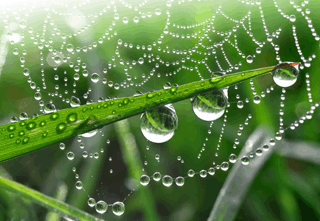 each of its eight legs lightly touching and feeling vibrations coursing along the silken strands. The spider knows to ignore vibrations caused by the wind, or by large animals brushing the web, but when a fly trapped in the sticky fibers struggles to become free, the spider reacts.
each of its eight legs lightly touching and feeling vibrations coursing along the silken strands. The spider knows to ignore vibrations caused by the wind, or by large animals brushing the web, but when a fly trapped in the sticky fibers struggles to become free, the spider reacts.
Now, imagine the spider has thousands more legs, and it and its web are thousands of times smaller, and imagine its web is connected to millions of other webs forming a matrix of interconnecting tissues. You are now imagining a fibroblast, the weaver of our fascia (see the little black dots in figure 2). Like the spider, our fibroblasts spin strands that form the interconnecting web of our fascia, a web formed both of stiff fibers called collagen and elastic fibers called elastin (as shown figure 3). Some spiders eat their own webs to recycle the proteins; so too, our fibroblasts can also secrete enzymes called collagenase that degrade old, worn out collagen. They do this, for example, when they dissolve scar tissue.
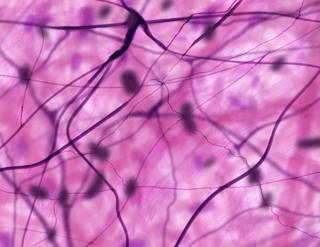 More versatile than the spider, however, our fibroblasts also produce water-loving molecules that bind water into the matrix[1], creating bubble-wraps filled not with air, but water. Like the spider, our fibroblasts feel their environment–they react to specific movements, tugs and pressure occurring within the matrix of fascia. They also listen for other signals too: tasting chemicals, feeling electromagnetic fields and noticing changes in the acidity in the tissues. At a higher level, our fibroblasts are in communication with our immune system and our nervous system. Psychological stress and physiological infection can stimulate or suppress their activity.
More versatile than the spider, however, our fibroblasts also produce water-loving molecules that bind water into the matrix[1], creating bubble-wraps filled not with air, but water. Like the spider, our fibroblasts feel their environment–they react to specific movements, tugs and pressure occurring within the matrix of fascia. They also listen for other signals too: tasting chemicals, feeling electromagnetic fields and noticing changes in the acidity in the tissues. At a higher level, our fibroblasts are in communication with our immune system and our nervous system. Psychological stress and physiological infection can stimulate or suppress their activity.
Fascia defined
 The word “fascia” has undergone a significant change in meaning over the last decade: from a catch-all term used to describe any connective tissue that was not bone, blood, tendon or ligament and whose purpose was considered to be only inert packing material, to the modern understanding which uses the terms fascia and connective tissue interchangeably. Today we know fascia has several purposes: it shapes our tissues (wraps, cushions, protects, supports and gives structure to them); is involved in movement (transferring and storing power and maintaining tension); it is part of an inner communication system (receiving and forwarding stimuli and information); and it is part of our internal supply system (metabolizing and transporting fluids and nutrients).[2]
The word “fascia” has undergone a significant change in meaning over the last decade: from a catch-all term used to describe any connective tissue that was not bone, blood, tendon or ligament and whose purpose was considered to be only inert packing material, to the modern understanding which uses the terms fascia and connective tissue interchangeably. Today we know fascia has several purposes: it shapes our tissues (wraps, cushions, protects, supports and gives structure to them); is involved in movement (transferring and storing power and maintaining tension); it is part of an inner communication system (receiving and forwarding stimuli and information); and it is part of our internal supply system (metabolizing and transporting fluids and nutrients).[2]
Under the microscope (see figure 4), collagen fibers appear like a string of v’s arranged end-to-end, like the pleats of an accordion: vvvvvvv. This allows the fibers to be somewhat springy: when stress arises that stretches the fibers, the v’s elongate, storing up elastic energy which is released when the stress ends, causing a little bounce back to the original length. This is one reason for the spring in our step when we are young. The fibers also tend to line up in the direction of predominant stress, but they can also form sheets of fascia which envelope tissues, such as our muscles and organs. The surfaces of these sheets are moist, which allows for easy gliding of one fascial group alongside another. Fascia, thanks to the fibroblasts, lubricates movement making it easy and smooth.
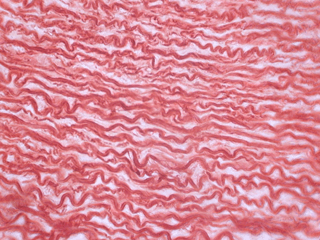 Our fascia and the fibroblasts which build it are active, alive and aware of what we are doing. Unfortunately, as we age, we have fewer fibroblasts and the ones we still have do not work as well (see figure 3). Reduced fibroblast activity can also happen when we become inactive, whether due to age, changes in lifestyle, or due to injury or disease. In these cases, the fascia may become tangled, matted and clotted together. The sliding surfaces don’t slide any more. We lose our bounce. Reduction in fibroblast activity results in less recycling of older, worn out fibers, and less production of newer, more resilient ones. It also means we dry up as we age. You may have noticed this already: those fine lines that are appearing near the corners of your eyes (called wrinkles) are signs of fibroblast no longer working as well as they once did. You may also have noticed it in your sports or in everyday movements; you feel stiffer, weaker and do not recover as quickly from injuries.[3] Much of this is due to fascial weakening, but fortunately there are ways to train your fascia!
Our fascia and the fibroblasts which build it are active, alive and aware of what we are doing. Unfortunately, as we age, we have fewer fibroblasts and the ones we still have do not work as well (see figure 3). Reduced fibroblast activity can also happen when we become inactive, whether due to age, changes in lifestyle, or due to injury or disease. In these cases, the fascia may become tangled, matted and clotted together. The sliding surfaces don’t slide any more. We lose our bounce. Reduction in fibroblast activity results in less recycling of older, worn out fibers, and less production of newer, more resilient ones. It also means we dry up as we age. You may have noticed this already: those fine lines that are appearing near the corners of your eyes (called wrinkles) are signs of fibroblast no longer working as well as they once did. You may also have noticed it in your sports or in everyday movements; you feel stiffer, weaker and do not recover as quickly from injuries.[3] Much of this is due to fascial weakening, but fortunately there are ways to train your fascia!
Fascial Training
 Robert Schleip, the renowned fascia researcher at Ulm University in Germany, writes in his excellent book, Fascial Fitness, that there are several ways to train your fascia. Fascial training may use small, elastic bounces while our muscles are in a stiffened position as well as slow, relaxed, static stretching; the kind we do in a yin yoga practice[4]. Robert is a great fan of springing, jumping, and swinging from bars or trees, all of which stimulates the elastic storage capacity within the fascia. And he has determined that these exercises need not take up a lot of time: just a few basic exercises, done twice per week for only 10 minutes is sufficient. More is not better! He recommends allowing 2 to 3 days of rest between these sessions.
Robert Schleip, the renowned fascia researcher at Ulm University in Germany, writes in his excellent book, Fascial Fitness, that there are several ways to train your fascia. Fascial training may use small, elastic bounces while our muscles are in a stiffened position as well as slow, relaxed, static stretching; the kind we do in a yin yoga practice[4]. Robert is a great fan of springing, jumping, and swinging from bars or trees, all of which stimulates the elastic storage capacity within the fascia. And he has determined that these exercises need not take up a lot of time: just a few basic exercises, done twice per week for only 10 minutes is sufficient. More is not better! He recommends allowing 2 to 3 days of rest between these sessions.
His fascial training exercises include simple movements such as
- Jumping twists
- Wall pushups, springing away from the wall
- Swinging arms and legs
- Throwing objects (or pretending to).
He has some simple rules for doing these exercises: spring in a position where the targeted muscles are not intensely stretched; the desired position is when the muscles are shortened and thickened to the greatest extent. Only then do the tissues become firmer through short, springy stretches.
Research into the effects of long held, static stretches on fascia includes a surprising immune system response: it reduces inflammation. Helen Langevin, a fascia researcher at Harvard Medical School looking into the effects of very long stresses on fascia discovered that a whole body stretch, held for 10 minutes twice a day reduces inflammation.[5]
Carla Stecco, an Italian fascia researcher notes in her book, Functional Atlas of the Human Fascial System, that cyclical stresses, the kinds that generate repetitive stress syndromes, increase inflammation. This is not good. However, eccentric exercises, which are the kinds of exercise often done in yoga classes, create greater stimulation of fibroblasts, increasing their production of collagen, thus stimulating healing.[6] She also notes that stretching causes an increase in the alignment of fibroblasts in tendons.[7] Robert Schleip echoes Carla’s view, and feels that eccentric exercises stress collagen fibers in all the various orientations they take in muscles and tendons.[8] He also feels that inflammation is reduced through moving our joints throughout their available range of motion.
Fascia exercises ideally include both tensile stresses, which can cause a stretch, and compressive stresses, which squeeze our tissues. Compression and shearing stresses, which move two areas of the body in the opposite directions, stimulates metabolism and the supply of fluid in the tissues. Tissues are first dehydrated: water that contains inflammation-causing free radicals is squeezed out. Then, after the stresses have ended, the tissues slowly rebound, rehydrating with clearer water.[9] Particularly effective in dehydrating and rehydrating tissues is the application of slow, persistent, yet gentle pressure, the kinds of stresses found in several forms of massage and in yin yoga.[10] These forms of fascial exercise stimulate the release of anti-inflammatory messengers, which help to reduce friction and stuckness between fascial layers.[11]
According to Robert Schleip, fascial fitness training 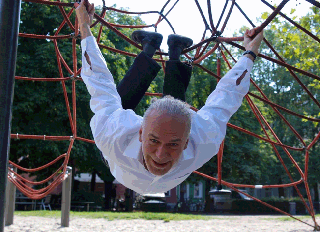
- Increases resilience and strength of tendons and ligaments
- Avoids painful friction in the hip joints and discs
- Avoids or reduces muscle injuries
- Maintains the youthful shape of the body with well-toned muscle definition.
And for sports:
- Muscles work more efficiently
- Recovery time is shorter
- Performance increases
- Movement and coordination improves (mobility).
Of course, due to the vagaries of human variation, not all fascial fitness exercises are appropriate for every body. For lithe, loose, dancer-types with soft connective tissues, the intention is not to increase flexibility but rather to learn how to sense when their joints are at their limits and to avoid applying stress there. People who have softer connective tissues are more prone to develop disc herniation, cellulite and stretch marks from pregnancy. Stiffer people (whom Robert refers to as Viking-types) are more likely to have strong connective tissue and are more prone to severe scarring after injury and ruptured Achilles tendons.[12] Vikings should stretch their fascia frequently and regularly using only their body weight or light weights, but only to the limits of their elasticity.[13] Depending upon where you fall in the spectrum between these extremes, the ideal form of exercise for you will vary. (In his book Robert offers prescriptions for both dancers and Vikings.)
Our understanding of fascia and fibroblasts continues to grow and evolve. New studies are revealing new features and functions every year. New books are also appearing at an increasing rate. Several of these books are ideal for yoga students and teachers who wish to know more about fascia and how yoga affects it. Highly recommended for anyone wishing to learn more is Robert Schleip’s Fascial Fitness, and David Lesondak’s Fascia: What it is and Why it matters. Specifically written for yogis is Joanne Sarah Avison’s book, Yoga: Fascia Anatomy and Movement.
Stay tuned! What will be discovered over the next few years will undoubtedly be fascia-nating.
Footnotes:
- — These molecules are called glycosaminoglycan (or GAGs for short). The most common GAG is hyaluronic acid (aka hyaluronan), which structures most of the water in our tissues. Other GAGs include chondroitin sulfate and glucosamine sulfate, which form the synovial fluids that lubricate our joints.
- — See Robert Schleip Fascial Fitness: How to Be Vital, Elastic and Dynamic in Everyday Life and Sport, published by Lotus Pub; 1 edition (June 1, 2017), page 26.
- — Indeed, most sporting injuries occur, not to the muscles or bones, but to the fascia investing these other tissues
- — See Robert Schleip Fascial Fitness, page 91.
- — Her work was done on rats, however, not humans. See The Science of Stretch by Helen Langevin
- — Eccentric exercises engage the muscles while the muscles undergo lengthening. This is different than concentric exercises where the muscles shorten when engaged or isometric exercises, where the muscles remain the same length while engaged.
- — See Carla Stecco Functional Atlas of the Human Fascial System published by Churchill Livingstone; 1 edition (January 21, 2015), page 7.
- — Fascial Fitness, page 81.
- — See “Training principles for fascial connective tissues: Scientific foundation and suggested practical applications” by Robert Schleip, PhD, MA, Divo Gitta Muller, HP in Journal of Bodywork & Movement Therapies (2013) 17, 103e115.
- — Fascial Fitness, page 93.
- — Fascial Fitness, page 192.
- — Fascial Fitness, page 98.
- — Fascial Fitness, page 160.
